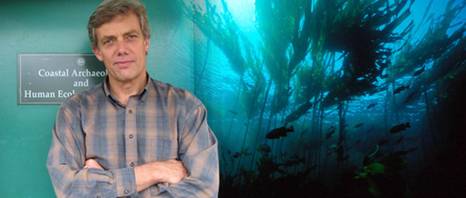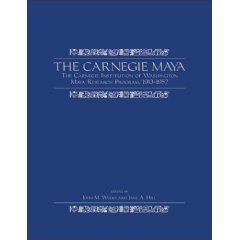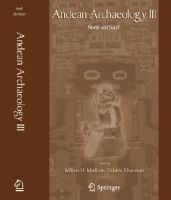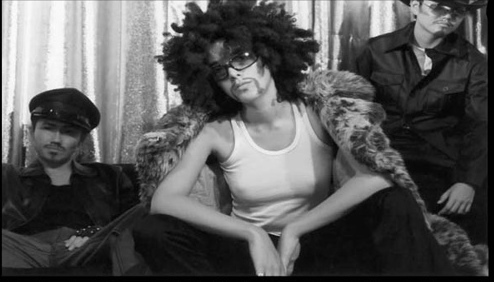February 24th, 2010 by Susan Atkey | No Comments »

Ever wondered how the peer-review process works?
The latest issue (March 2010) of the journal American Anthropologist offers an editorial on the process at the American Anthropologist, along with three suggestions to successful reviewing. As someone who often talks to students about the differences between peer-reviewed versus popular articles, I found this behind-the-scenes look quite interesting.
I won’t give away all the tips here since you can go over and read the article online via our subscription through Anthrosource, but one suggestion that caught my eye was “Just Write the Damn Review” because:
tardy reviewers are the number one source for delayed responses to authors and, thus, the primary contributor to the sometimes-slow pace of journal publishing about which many scholars complain.
For another take on the peer-review process (and one that inspired the editorial at the American Anthropologist), see the article The Peer-Review System Is Broken in the Chronicle of Higher Education (another journal to which UBC Library subscribes online).
Citations
Boellstorff, Tom.
2010 Three Tips for Making Peer Review Work for You. American Anthropologist 112(1): 1-4.
Myers, Daniel J.
2009 The Peer-Review System Is Broken. Review. Chronicle
of Higher Education, August 31.
Posted in Uncategorized | No Comments »
January 25th, 2010 by Susan Atkey | No Comments »
Interested in anthropology and want to know more about possible career paths? The American Anthropologist Association hosts a series of podcasts exploring the roles of anthropologists outside of traditional academic settings. Each podcast is in the form of an interview with someone working in anthropology outside of academia.
In the current podcast, #4 in the series, Kevin Bialy of the Fogarty International Center at the National Institutes of Health (NIH) discuses his role as acting international program officer for the Western Hemisphere and offers suggestions for students interested in governmental work.
Previous Profiles in Practice podcasts include:
Posted in Uncategorized | No Comments »
October 29th, 2008 by Susan Atkey | No Comments »

A reminder of a talk today by Dr. Jon Erlandson at 11am in 120 AERL:
Neptune’s Children: An Archaeological History of Human Seafaring, Fishing, and Impacts on Marine Ecosystems
Dr. Erlandson is a professor in the department of Anthropology and a Knight professor of Arts and Sciences at the University of Oregon. He is also the executive director of the University of Oregon’s Museum of Natural and Cultural History, and a co-editor of the Journal of Island and Coastal Archaeology. Dr. Erlandson has taught as well as conducted research in California and Alaska, and has explored the Viking Age sites in Iceland. His research revolves around the origins and development of maritime societies, human migrations, historical ecology, and the history of human impacts on marine fisheries and ecosystems. He also revealed the “Kelp Highway Hypothesis”, suggesting another theory regarding the peopling of the Americas.
For more on Dr. Erlandson’s recent research, see this BBC news story: http://news.bbc.co.uk/2/hi/science/nature/5398850.stm
Books by Dr. Erlandson can be found in Koerner Library, including:
– Canyon through time : archaeology, history, and ecology of the Tecolote Canyon area, Santa Barbara County, California
– Human impacts on ancient marine ecosystems : a global perspective
– Early hunter-gatherers of the California coast
Posted in Uncategorized | No Comments »
November 22nd, 2007 by Susan Atkey | No Comments »

I’ve put a book on 1-day course reserve for students in ANTH 232, Ancient Latin America, who may be having trouble tracking down archaeological reports for their site or finding that all the reports on their area are signed out.
It’s called “The Carnegie Maya: The Carnegie Institution of Washington Maya Research Program, 1913–1957“, and it reprints “all the archaeological, ethnographic, linguistic, and historical investigations in the Maya region of southern Mexico and northern Central America between 1914 and 1957”. It also includes a searchable CD-ROM with all the reports.
You can check the detailed Table of Contents at http://www.loc.gov/catdir/toc/ecip065/2005037446.html to see if the the structure you are researching is included in this volume. For example, Section 38 on Chichen Itza includes reports such as:
- Report on the Excavations at Chichén Itz , Mexico, 1924 (E.H. Morris)
- Report on the Temple of the Four Lintels (Station 7), 1925. (O. G. Ricketson)
- Report on the Casa Redonda (Station 15), 1929. (H.E.D. Pollock)
- The Caracol, 1931 (K. Ruppert)
Posted in Uncategorized | No Comments »
November 14th, 2007 by Susan Atkey | No Comments »

We now have online access to an eBook that may be useful for students in Dr. Blake’s ANTH 232 class (Ancient Latin America) who are in the midst of the Andean Archaeology section of the course. “Andean Archaeology III” is the third volume in the Andean Archaeology series by William Isbell and Helaine Silverman.
From the dustjacket:
“The book focuses on the marked cultural differences between the northern and southern regions of the Central Andes, and considers the conditions under which these differences evolved, grew pronounced, and diminished.”
Since the book is online as part of SpringerLink, you can all access it without coming to the library (make sure you have set up the VPN.) To read the book, click here or on the book title above.
Table of Contents
Part I: Introduction:
Regional Patterns.
Part II: The North
America’s First City? The Case of Late Archaic Caral.
Religious Warfare at Chankillo.
The Vicus-Mochica Relationship.
Competitive Feasting, Religious Pluralism and Decentralized Power in the Late Moche Period.
Northern Exposures: Recuay-Cajamarca Boundaries and Interaction.
Chimu Craft Specialization and Political Economy: A View from the Provinces.
Part III: The South
Early Village Society in the Formative Period in the Southern Lake Titicaca Basin.
The Emergence of Complex Society in the Titicaca Basin: The View from the North.
Redefining Plant Use at the Formative Site of Chiripa in the Southern Titicaca Basin.
Ritual and Society in Early Intermediate Period Ayacucho: A View from the Site of Nawinpukyo.
Missing Links, Imaginary Links: Staff God Imagery in the South Andean Past.
Water, Blood and Semen: Signs of Life and Fertility in Nasca Art.
Burial Patterns and Sociopolitical Organization in Nasca 5 Society.
When and Where Did the Nasca Proliferous Style Emerge?
Violence and Rural Lifeways at Two Peripheral Wari Sites in the Majes Valley of Southern Peru.
Suspension Bridges of the Inca Empire.
Part IV: Conclusion
Rethinking the Central Andean Co-Tradition.
Note: We also have all three print volumes in the Andean Archaeology series in Koerner at call number F2229.A555 2002.
Posted in Uncategorized | No Comments »
October 19th, 2007 by Susan Atkey | No Comments »

Students in Dr. Alexia Bloch’s ANTH 312 (Gender Relations) and ANTH 495 (Gender, Migration, and Globalization) classes may be interested in the “9th Annual International Drag King Community Extravaganza” this weekend. Drag Kings from around the world take the stage, teach workshops, put on live performances, and cause a general gender ruckus. For more information, see the website at http://www.idkevancouver.com/.
Want to read more? These books at UBC library will get you started:
The drag king anthology / edited by Donna Jean Troka, Kathleen LeBesco, Jean Bobby Noble
In a queer time and place : transgender bodies, subcultural lives / Judith Halberstam
Unzipping gender : sex, cross-dressing and culture / Charlotte Suthrell.
The transgender studies reader / edited by Susan Stryker and Stephen Whittle.
UBC Library also subscribes to a number of ejournals on gender and sexuality, including:
International Journal of Sexuality and Gender Studies
Journal of Gender Studies
Gender and Society
—–
(Photo credit: Sabrina’s stash)
Posted in Uncategorized | No Comments »
April 13th, 2007 by Susan Atkey | No Comments »

(Photo: Library graphics)
Both Koerner and Woodward libraries will be open extended hours during the exam period from April 15-29.
Koerner’s extended hours:
Monday – Friday: 8am – 1am
Saturday, Sunday: 10am -1am
Woodward’s extended hours:
Monday – Thursday: 8am – 12midnight
Friday: 8am – 6pm
Saturday: 10am – 6pm
Sunday: 12noon – 12midnight
Posted in Uncategorized | No Comments »
March 15th, 2007 by Susan Atkey | No Comments »

The Archaeological Society of British Columbia invites you to Artifact Identification Night at the Vancouver Museum (1100 Chestnut Street, Vancouver, BC) tonight at 7:00 pm.
Bring in your artifacts and talk to archaeologists about your discoveries!
Posted in Uncategorized | No Comments »
February 26th, 2007 by Susan Atkey | No Comments »
The Department of Asian Studies and the Center for India and South Asia Research present a talk:
Localized Mythologies and Transnational Mediations: Women’s Oral Poetry from the Himalayan Foothills by Kirin Narayan
Kirin Narayan, Professor of Anthropology at the University of Wisconsin, Madison, is a leading folklorist of South Asia. Her research concerns women’s oral traditions in North India, narrativity and ethnography, and the South Asian diaspora. Her numerous publications include Storytellers, Saints and Scoundrels (winner of the 1990 Victor Turner Prize for Ethnographic Writing), Mondays on the Dark Night of the Moon : Himalayan foothill folktales (1997), and a novel, Love, Stars, and All That (1994).
The talk will be held Wednesday, February 28, 2007 at 4 PM in the Asia Centre, room 604 (show me a map)
Posted in Uncategorized | No Comments »
February 19th, 2007 by Susan Atkey | No Comments »
 A new ethnography has arrived that may be of interest to students in ANTH 315, Japanese Culture and Society. “Nature, ritual, and society in Japan’s Ryukyu Islands” by Arne Rokkum presents an ethnographic portrayal of the people of the Southern Ryukyu Islands and their world.
A new ethnography has arrived that may be of interest to students in ANTH 315, Japanese Culture and Society. “Nature, ritual, and society in Japan’s Ryukyu Islands” by Arne Rokkum presents an ethnographic portrayal of the people of the Southern Ryukyu Islands and their world.
For more information, see the publisher’s blurb here or come by and pick up the book at Koerner library call number GN635.R9 R65 2006.
Posted in Uncategorized | No Comments »







 A new ethnography has arrived that may be of interest to students in ANTH 315, Japanese Culture and Society. “
A new ethnography has arrived that may be of interest to students in ANTH 315, Japanese Culture and Society. “